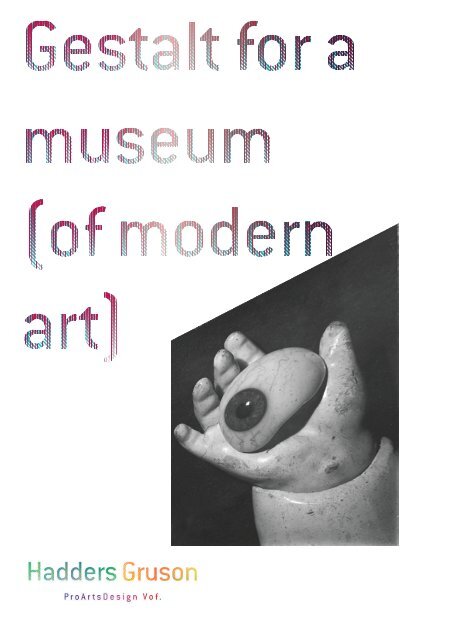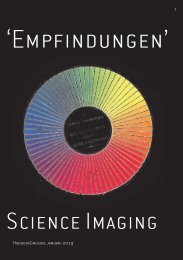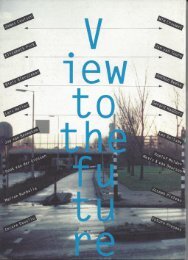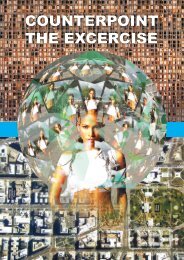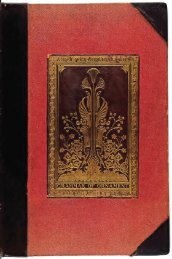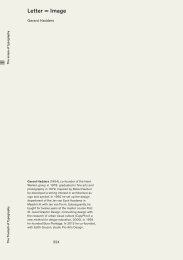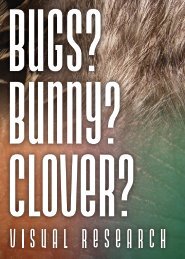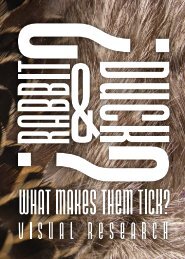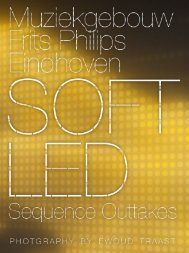Gestalt for a museum (of modern art); Adapt. 2018
Gestalt for a museum (of modern art) This gestalt is based on the mix of characters in three ‘grand narratives’. Echo and Narcissus, Alice and The Cheshire Cat from Alice in Wonderland and Dorian in The Picture of Dorian Gray. In all of these stories plays the concept of mirroring a central role. Narcissus in love with his own reflection. Echo can only echo. Alice falls through the mirror and meets the Cheshire Cat who replies in riddles, changes his shape or color and can partially or completely disappear. And finally, Dorian Gray, whose excesses and debaucheries leave behind physical traces in his painted portrait, but do not affect his real face. Echo is in love with the Cheshire Cat. This in turn is in love with his own reflection. However, he did not realize that his reflection is not keeping pace with its own excesses. The face before the mirror turns into a “sacred monster”. The face in the mirror is always enjoyable. The cries he utters are out of admiration for repeats itself by Echo. The Cheshire Cat thinks the mirror is talking back with a loving voice. The contemporary museum is - simply put - mainly in conversation with ‘art’ in the form of what living artists produce and what is written about dead artists. The audience is witness to this dialogue between art and institute and tries occasionally to throw a word in between. These words will be heard only if they are a reflection on this dialogue.
Gestalt for a museum (of modern art)
This gestalt is based on the mix of characters in three ‘grand narratives’. Echo and Narcissus, Alice and The Cheshire Cat from Alice in Wonderland and Dorian in The Picture of Dorian Gray. In all of these stories plays the concept of mirroring a central role. Narcissus in love with his own reflection. Echo can only echo. Alice falls through the mirror and meets the Cheshire Cat who replies in riddles, changes his shape or color and can partially or completely disappear. And finally, Dorian Gray, whose excesses and debaucheries leave behind physical traces in his painted portrait, but do not affect his real face.
Echo is in love with the Cheshire Cat. This in turn is in love with his own reflection. However, he did not realize that his reflection is not keeping pace with its own excesses. The face before the mirror turns into a “sacred monster”. The face in the mirror is always enjoyable. The cries he utters are out of admiration for repeats itself by Echo. The Cheshire Cat thinks the mirror is talking back with a loving voice.
The contemporary museum is - simply put - mainly in conversation with ‘art’ in the form of what living artists produce and what is written about dead artists. The audience is witness to this dialogue between art and institute and tries occasionally to throw a word in between. These words will be heard only if they are a reflection on this dialogue.
Create successful ePaper yourself
Turn your PDF publications into a flip-book with our unique Google optimized e-Paper software.
<strong>Gestalt</strong> <strong>for</strong> a <strong>museum</strong> (<strong>of</strong> <strong>modern</strong> <strong>art</strong>)<br />
This gestalt is based on the mix <strong>of</strong> characters<br />
in three ‘grand narratives’. Echo and Narcissus,<br />
Alice and The Cheshire Cat from Alice in<br />
Wonderland and Dorian in The Picture <strong>of</strong> Dorian<br />
Gray. In all <strong>of</strong> these stories plays the concept <strong>of</strong><br />
mirroring a central role. Narcissus in love with<br />
his own reflection. Echo can only echo. Alice<br />
falls through the mirror and meets the Cheshire<br />
Cat who replies in riddles, changes his shape or<br />
color and can p<strong>art</strong>ially or completely disappear.<br />
And finally, Dorian Gray, whose excesses and<br />
debaucheries leave behind physical traces in<br />
his painted portrait, but do not affect his real<br />
face.<br />
Echo is in love with the Cheshire Cat. This<br />
in turn is in love with his own reflection.<br />
However, he did not realize that his<br />
reflection is not keeping pace with its<br />
own excesses. The face be<strong>for</strong>e the mirror<br />
turns into a “sacred monster”. The face<br />
in the mirror is always enjoyable. The<br />
cries he utters are out <strong>of</strong> admiration <strong>for</strong><br />
repeats itself by Echo. The Cheshire Cat<br />
thinks the mirror is talking back with a<br />
loving voice.<br />
The contemporary <strong>museum</strong> is - simply put -<br />
mainly in conversation with ‘<strong>art</strong>’ in the <strong>for</strong>m <strong>of</strong><br />
what living <strong>art</strong>ists produce and what is written<br />
about dead <strong>art</strong>ists. The audience is witness to<br />
this dialogue between <strong>art</strong> and institute and tries<br />
occasionally to throw a word in between. These<br />
words will be heard only if they are a reflection<br />
on this dialogue.
Cheshire Cat, Echo and Dorian Grey<br />
The Cheshire Cat is a fictional cat appearing in Lewis Carroll’s Alice’s Adventures<br />
in Wonderland. Alice first encounters it at the Duchess’s house in her<br />
kitchen, and then later outside on the branches <strong>of</strong> a tree, where it appears<br />
and disappears at will, engaging Alice in amusing but sometimes vexing<br />
conversation. The cat sometimes raises philosophical points that annoy or<br />
baffle Alice. It does, however, appear to cheer her up when it turns up suddenly<br />
at the Queen <strong>of</strong> He<strong>art</strong>s’ croquet field, and when sentenced to death baffles<br />
everyone by making its body disappear, but its head remain visible, sparking<br />
a massive argument between the executioner and the King and Queen <strong>of</strong><br />
He<strong>art</strong>s about whether something that does not have a body can indeed be<br />
beheaded.<br />
At one point, the cat disappears gradually until nothing is left but its grin,<br />
prompting Alice to remark that she has <strong>of</strong>ten seen a cat without a grin but<br />
never a grin without a cat. It is this unusual disappearing act <strong>for</strong> which most<br />
people remember Cheshire Cat.<br />
One day when Narcissus was out hunting stags, Echo stealthily followed<br />
the handsome youth through the woods, longing to address him but unable<br />
to speak first. When Narcissus finally heard footsteps and shouted “Who’s<br />
there?”, Echo answered “Who’s there?” And so it went, until finally Echo<br />
showed herself and rushed to embrace the lovely youth. He pulled away<br />
from the nymph and vainly told her to leave him alone. Narcissus left Echo<br />
he<strong>art</strong>broken and she spent the rest <strong>of</strong> her life in lonely glens, pining away <strong>for</strong><br />
the love she never knew, until only her voice remained.<br />
The Picture <strong>of</strong> Dorian Gray The novel tells <strong>of</strong> a young man named Dorian Gray,<br />
the subject <strong>of</strong> a painting by <strong>art</strong>ist Basil Hallward. Basil is greatly impressed<br />
by Dorian’s physical beauty and becomes strongly infatuated with him,<br />
believing that his beauty is responsible <strong>for</strong> a new mode in his <strong>art</strong>. Talking<br />
in Basil’s garden, Dorian meets Lord Henry Wotton, a friend <strong>of</strong> Basil’s, and<br />
becomes enthralled by Lord Henry’s world view. Espousing a new kind <strong>of</strong><br />
hedonism, Lord Henry suggests that the only thing worth pursuing in life is<br />
beauty, and the fulfilment <strong>of</strong> the senses. Realising that one day his beauty<br />
will fade, Dorian cries out, wishing that the portrait Basil has painted <strong>of</strong> him<br />
would age rather than himself. Dorian’s wish is fulfilled, subsequently plunging<br />
him into a series <strong>of</strong> debauched acts. The portrait serves as a reminder<br />
<strong>of</strong> the effect each act has upon his soul, with each sin being displayed as a<br />
disfigurement <strong>of</strong> his <strong>for</strong>m, or through a sign <strong>of</strong> aging.
Gerard Hadders, Pro Arts Design<br />
Tuinlaan 64e, NL-3111 AW Schiedam,<br />
t: +31(0)10 426 29 66<br />
m: +31(0)623 67 10 93<br />
gerard.hadders@pro<strong>art</strong>sdesign.nl
Visual essay


